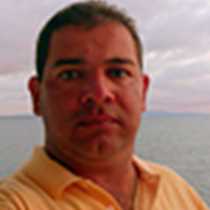Islands of the Panama Gulf & the Panama Canal
Our second day in Panama!! After a fantastic journey in Coiba National Park, it was time to reposition National Geographic Sea Lion to our next destination. The trip was pleasant and our guests enjoyed several activities during the longest cruising of the expedition.
The Bay of Panama has a group of volcanic islands with a complex geological structure of layers lifted by tectonic interaction between Cocos and Panama plates. Boná and Otoque are located 42 nautical miles southwest from Panama City and represent one of the most important nesting colonies of four species of marine birds: brown pelicans, brown boobies, blue footed boobies and the magnificent frigatebirds.
This explosion of life is due to the rich nutrients present in the ocean that attracts a multiple variety of fish and marine life, which is the basic diet for these birds and many other predators. With no human intervention, a big section of the islands are left to be a natural sanctuary. The exploration with the Zodiac cruises showed us the beauty and richness of the islands making these experiences a treat to the senses.
By lunchtime we repositioned the ship to the entrance of the Panama Canal. As we repositioned the ship we had a quick glimpse at a small group of baleen whales that were feeding alongside a group of brown pelicans and laughing gulls. With the official procedures to enter complete, it was time to admire one of the most important and impressive engineering works made by humans. This navigational artery allows transportation of high numbers of commercial containers from the Pacific to the Caribbean and vice versa cutting shipping times, hence reducing costs and fuel consumption.
We crossed the Miraflores Locks and Pedro Miguel Locks which put us in the highest level of the canal. The locks’ operational systems work because of the coordination between the staff that helps move the ships, the equipment and of course the locks structure. Our day was a combination of natural and manmade wonders, leaving us to understand that it is possible for man and nature to share the planet and live in harmony.




